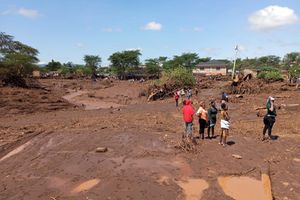There’s more to pastoralist woes than irrigation and abattoirs
What you need to know:
- Mistake: Celebrating perches of irrigated fields and urban concentrations as solutions, may over-simplify the problems of the rangelands
The catastrophe unfolding in northern Kenya and the Horn of Africa has appropriately elicited reactions of horror, dismay and empathy.
The overwhelming acts of generosity exemplified by the selfless donation of his full salary for July by Constable Hashim Mohamed Elmogo and the growing donations from domestic and foreign sources represent a ray of hope at a time when sacrifice is in retreat in the face of self-obsessed greed and consumerism.
As the immediate challenge of saving the starving recedes, masters of salvation have started pointing fingers at those responsible for the plight, and others are prescribing quick fixes.
Poor preparedness
Of course government is blamed for everything from not irrigating the deserts and building abattoirs, to dysfunctional early warning systems and poor preparedness, to failure to link food surplus and deficit regions of the country.
Predictably, the tired cliché that government is deliberately marginalising pastoralists is finding political amplification from the talking classes.
It is true that food security and a sustainable agricultural policy is a downright failure under this government.
But finger-pointing at government failure and celebrating perches of irrigated fields and urban concentrations as solutions, may over-simplify the monumental prolems of our rangelands.
Oldest irrigation system
Irrigation is not a novelty to Kenyan pastoralists. The Marakwet of Kerio Valley still operate the oldest known irrigation system in sub-Saharan Africa.
The Turkana of Katilu have at different times since the 1960s operated irrigated fields. But these efforts can only sustain modest numbers of households. The Turkwel River is a seasonal river downstream.
Apart from not having sufficient water, any increases in irrigation upstream may translate into destruction of the riverine forest and sub-surface water flows that are critical for a majority of the Turkana pastoralists.
Suggestions that Turkana should be settled in some towns to do more gainful things are not informed by two facts.
First, it has been done before. Those Turkana who moved to Kitale after the famine of the early 1980s are not only demeaned by the most debasing livelihoods at the bottom of the food chain, but reproduce generations whose enduring dream is to return to pastoralism one day.
The dilemma of pastoralism in Kenya receives little air time.
How do we regain the balance between humans and animals on the rangeland without allowing the cruel system of curling that fixed the problem in the past?
Historically, the dry lands had cycles of years of abundant rains followed by extended droughts. The biblical dream of seven fat cows and seven lean ones is a true account of happenings in these places.
Traditionally, during the years of scarcity, the most vulnerable persons and animals died.
Depleted animals were competed for in genocidal wars, and a balance of reduced human and animal numbers remained within the carrying capacity of the land.
Over recent decades, we have fashioned a system where extreme droughts lead to famine relief centres where people who would otherwise have died receive food and housing.
We have no way of giving them a new livelihood as their animals are wiped out by drought and theft.
After the drought, they have no stock to return to pastoralism. They live on the margins of a pastoral economy but are sustained by food aid.
The drought curls animals while the human population grows exponentially.
Lokichar is a township in South Turkana, established as a relief centre after the great drought of the early 1980s.
Today, the township has expanded with many residents being third and fourth generation famine refugees living off the dream that one day they will own large herds of cattle.
Traditional economy
If we are seeking a lasting solution to the famine cycle, first we must address the need for totally new livelihoods for those sloughed off the traditional economy.
Second we must invest in skill development for the children of the desert. Third we must stem the crowding of illegal immigrants into the rangelands like is happening in much of north eastern Kenya.
Most importantly, the concerns of the pastoral populations should detain our attention beyond the dramatic months when their plight is brought to our homes by pictures of the emaciated and dying children and mothers.
Mukhisa Kituyi is a director at the Kenya Institute of Governance. [email protected]




